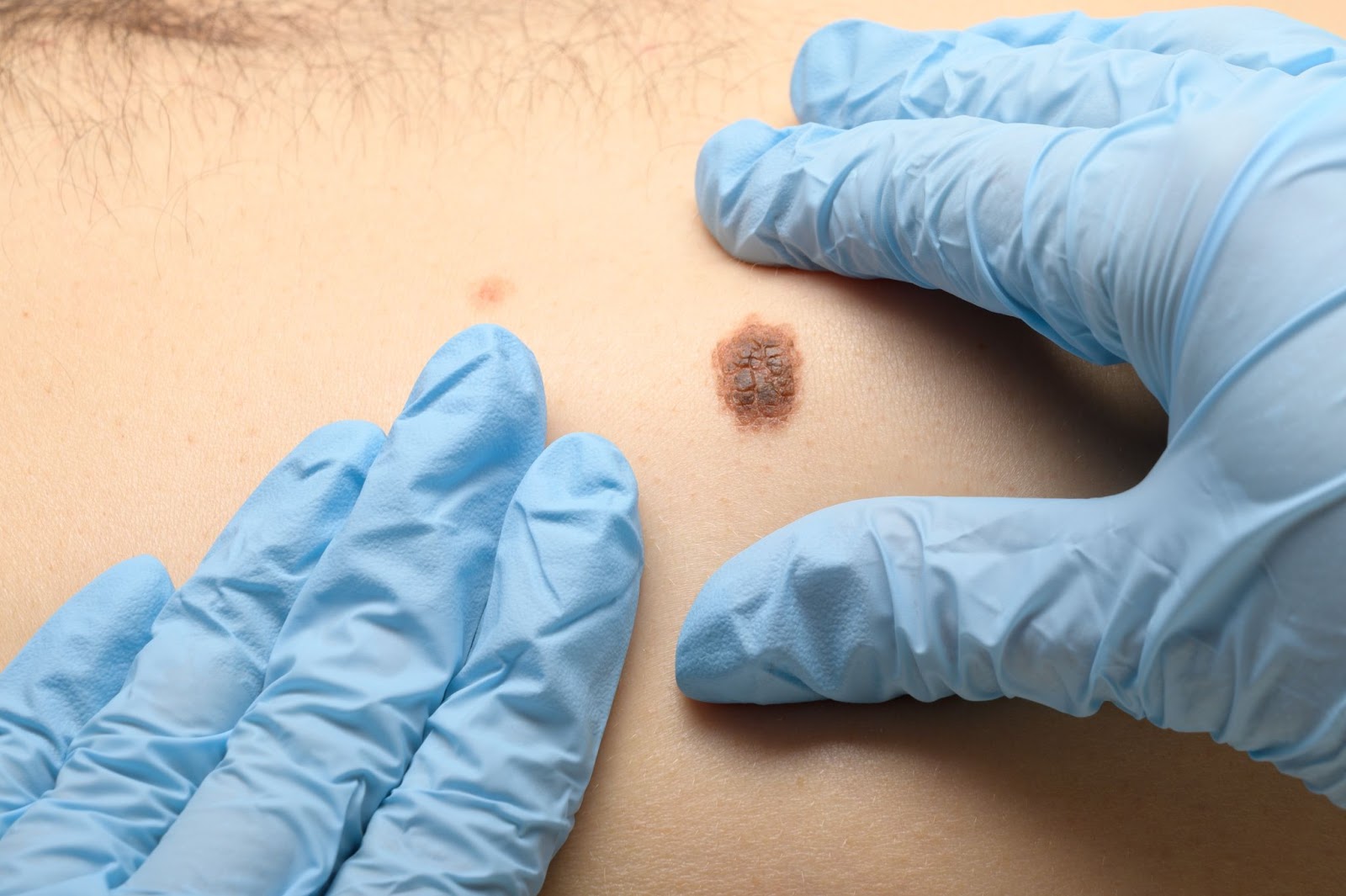Protect Yourself from Skin Cancer with These Essential Self Examination Tips
- services
- skin-conditions
- skincare-tips
Did you know that an average of one in five Americans will be diagnosed with skin cancer in their lifetime?
As the most common form of cancer in the nation, approximately 9,500 U.S. citizens receive this unfortunate news daily. However, regardless of its prominence, skin cancer is not only treatable but preventable with proper care and regular screenings. With support from your board-certified dermatologist, you can become an active participant in your skin’s health by practicing skin cancer detection from the comfort of your own home.
Signs of Skin Cancer
You’ll first need to know the signs to search for before conducting your check. While performing your self-exam, be on the lookout for these common signs of skin cancer:
- New moles or blemishes
- Changes to color, shape, size or texture of existing blemishes
- Prolonged itches, burns or bleeding
- Open sores that do not heal within three weeks
For more information on skin cancer and skin cancer prevention, visit TheBigSee.org hosted by The Skin Cancer Foundation or speak with your board-certified dermatologist.
How to Perform a Skin Self-Exam
Early detection is one of your greatest defenses in the battle against skin cancer, with 99% of cases considered curable as a result of early diagnosis and treatment. Because you know your body better than anyone, performing monthly self-examinations allows you to spot any abnormalities with as little as a mirror and a few moments of your time.
The American Academy of Dermatology Association (AAD) outlines the following steps for a comprehensive self-exam:
1. Examine your body in a full-length mirror.
Performing an examination like this allows you to get up close and personal with the state of your skin. When reviewing yourself in the mirror, make sure to examine your face (nose, lips, mouth), torso (neck, chest, torso) and give yourself a full, general overview before diving deeper into specific parts of your body.
2. Check your underarms, forearms and palms.
Make sure to review from stop to bottom. Scan your hands (top and palms, between fingers, under fingernails) and your arms (elbows, forearms, underarms, upper arms).
3. Look at your legs, toes and feet.
Take a seat and review each leg, propping each up to perform a 360-degree examination starting at the upper thigh down and traveling down to your feet (top and soles, between toes, under toenails).
4. Examine your neck and scalp.
Using a hand mirror, closely examine your neck and scalp for any abnormalities. Part your hair to increase scalp visibility. If possible, ask a friend or family member to assist you in this exam.
5. Check your back and buttocks.
Finally, standing in front of a full-length mirror, use the hand mirror to review your back, buttock and back of your legs.
As the most dangerous of skin cancers, regular examinations for melanoma are crucial (especially in a sunny location like our beautiful Palmetto State). Next time you perform an at-home exam, remember it’s as easy as ABCDE.
Checking For Melanoma
- Asymmetry: Is the shape of a spot incongruent?
- Borders: Does a spot have an irregular or ill-defined border?
- Color: Is the spot discolored or varied (tan, brown, black, white, red or blue)?
- Diameter: Is the spot larger than 6mm in diameter (about the size of an eraser)?
- Evolving: Has your spot changed in shape, size, color, etc.?
You Are Not Alone
If you feel that you’ve discovered signs of skin cancer, scheduling a visit with your board-certified dermatologist as soon as possible is a crucial next step. Our Charleston Dermatology team of skilled, compassionate doctors is standing by to support you through this journey. Contact us today to schedule your appointment.
